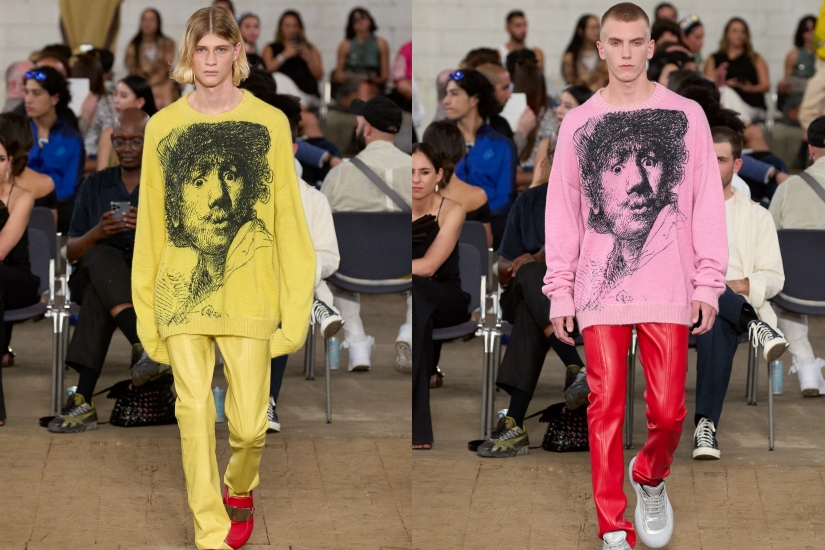Designer Jonathan Anderson is undoubtedly one of the most imaginative geniuses in the fashion world. He, who has always dreamed of becoming a stage actor since childhood, once again injects dramatic elements into his personal brand JW Anderson this season, bringing with it several special designs that have sparked discussions. However, if you have noticed this season’s fashion show, have you also noticed the large number of self-portraits with curly hair and slightly open mouths that appear throughout the collection?
Before the exhibition, the brand produced a teaser video showing models in all-white outfits with a lot of self-portraits printed on them. Street posters were also put up with the question: Have you seen this man? (You will). Who is this curly-haired man? In fact, this quirky man is none other than one of the giants of Western art history, the Dutch genius artist: Rembrandt van Rijn (1606-1669, also known as Rembrandt).
Although this season Jonathan Anderson took the 90s topical stage play “The Pitchfork Disney” as the inspiration for this series, incorporating objects such as bicycle handles, broken skateboards, barcodes, CDs, etc. into the clothing, to remind everyone that modernity is essentially fleeting, and inevitably falls into historical errors. In order to make the proposition of “what is modernity?” more vivid, Jonathan Anderson, who is well-versed in art, has brought in the paintings of Lynn Brund, attempting to further explain the thoughts behind the theme and this series.
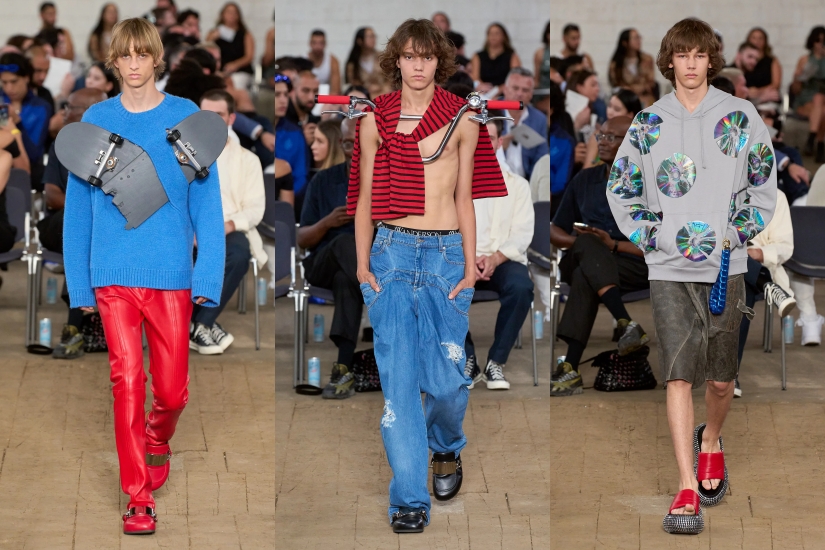
At the fashion show, especially on the yellow and pink coats in look 26 and look 27, Jonathan Anderson selected Linbran’s painting “Self-portrait in a Cap, Wide-eyed and Open-mouthed” from the “Golden Age” of the 1630s, and turned it into a giant head portrait pattern. Through its 400 years of history, it brings out the essence of “selfies” that has not changed much even after hundreds of years, still direct and captivating. At the same time, emphasizing, as Jonathan Anderson said, modernity creates an illusion in fashion, and fashion has never been a modern act.
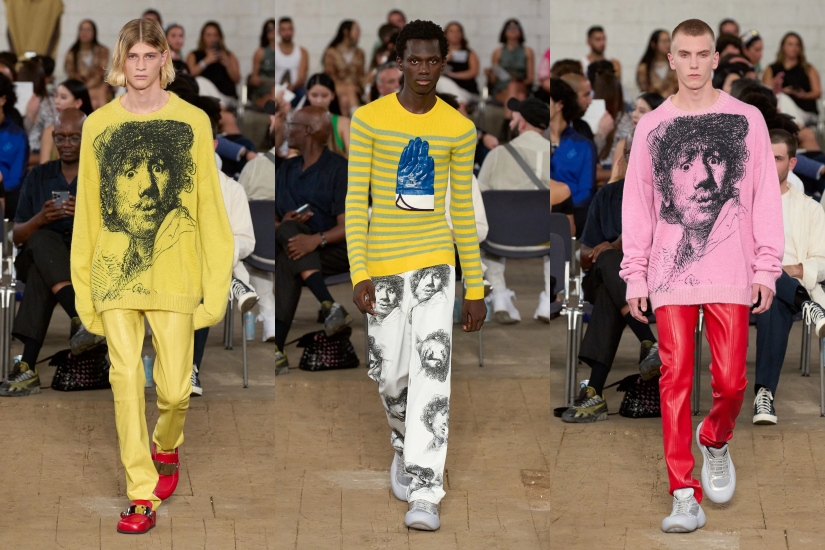
Arriving at this moment, you may ask: Who is Rimbaud? What can he do to make Jonathan Anderson tell the SS23 series with his work, and what is this artist good at?
Born in the 17th century in the Netherlands, Rembrandt is recognized as one of the most important artists in Western art history. He was proficient in drawing, oil painting, and printmaking, being both a talented artist and a quirky, passionate collector. He played multiple roles as a teacher and art dealer, but lived an unrestrained life and ultimately died in poverty. During his lifetime, Rembrandt, who was already famous, was known as the “magician of light and shadow” by later generations because of his ability to create compositions on the flat surface of a canvas that had soul and even emitted a profound sense of space. The house where he lived for 20 years had a large painting studio (Groote Schildercaemer) built with oversized colored glass windows, allowing Rembrandt to observe the subtle changes of light and shadow while painting.
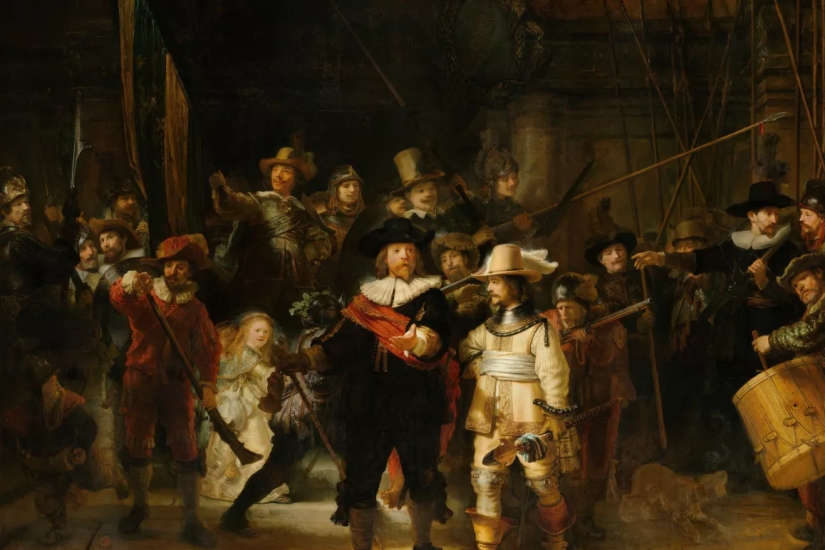
In an era without smartphones for convenient selfies, Limbland has already created a large number of self-portraits. It is rumored that the number of recorded portraits alone has reached more than 100, and his familiar family members and close friends have all appeared in his paintings. The reason why Limbland’s portrait works have such a huge impact on history is that this genius is very good at creating strong light and shadow contrasts between the subject and the background, enhancing the sense of space and depth within the frame through very delicate and complex color layers, precise composition, and realistic perspectives, creating astonishing dramatic effects.
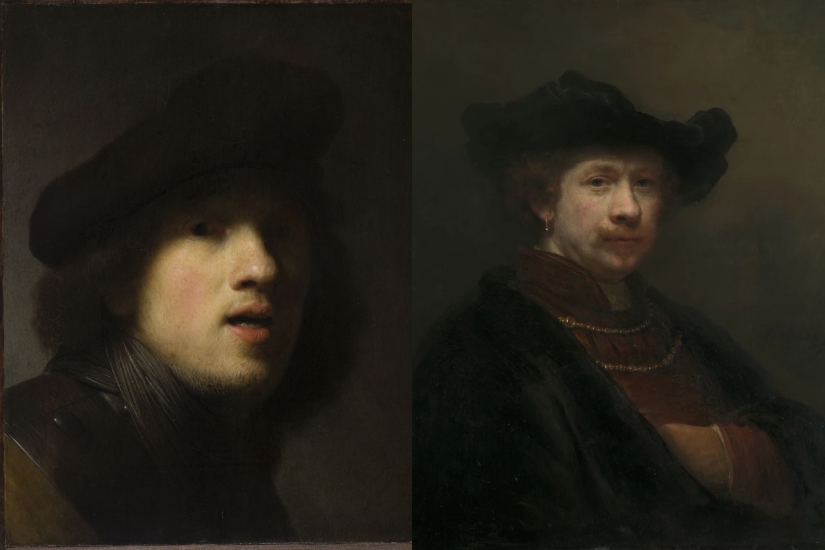
Furthermore, in the 17th century, Rembrandt boldly broke away from the Renaissance trend that had established Western art history at the time. Contrary to its emphasis on idealism, he mercilessly portrayed the “imperfect” side of the protagonist in his paintings. He even used self-portraits to showcase the subject’s flaws and imperfections, advocating for painting to capture humanity instead of relying on eyesight. This allows us to see our own good and bad, thereby exploring the critical and growth space of each individual.
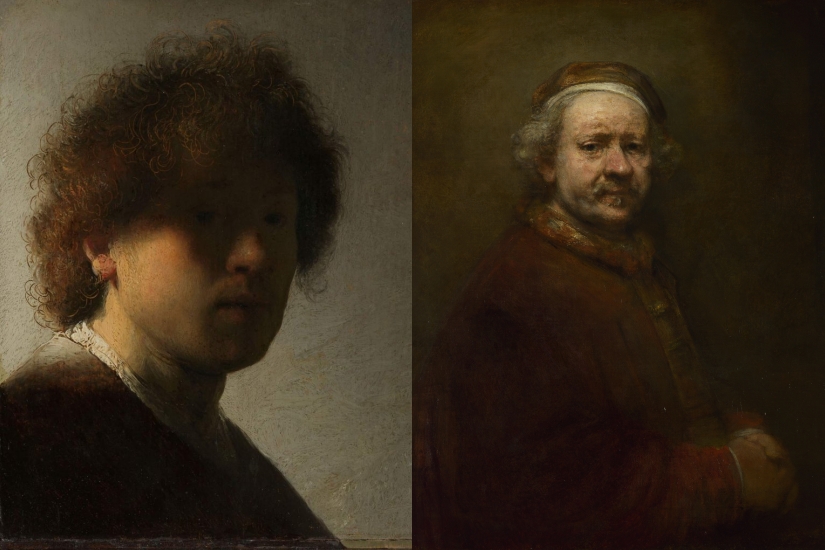
However, he, who rose to fame in the 1630s, saw a sharp decline in the number of his works starting in the mid to late 1640s. His themes and styles varied significantly, clearly not receiving the same support from patrons as during his golden age. Additionally, the Western art scene developed new artistic trends from the late 17th century to the early 18th century, emphasizing the idealized virtues of art, leading to harsh criticism of a series of Rembrandt’s works with strong “realism”. Eventually, many patrons began seeking other portrait painters in Amsterdam, causing Rembrandt to be neglected in the Netherlands and declaring bankruptcy in 1656. It wasn’t until the late 18th century to the mid-19th century that the Western art scene saw the rise of “Romanticism”, bringing Rembrandt’s works back into the spotlight.
It can be seen from this that this genius who has expanded the possibilities of art to a level that others cannot reach, dared to share his critical realistic vision over 400 years ago, how could he not attract the attention of Jonathan Anderson, this genius?
資料及圖片來源:JW Anderson、Sotheby’s、Christie’s、Rijksmuseum

